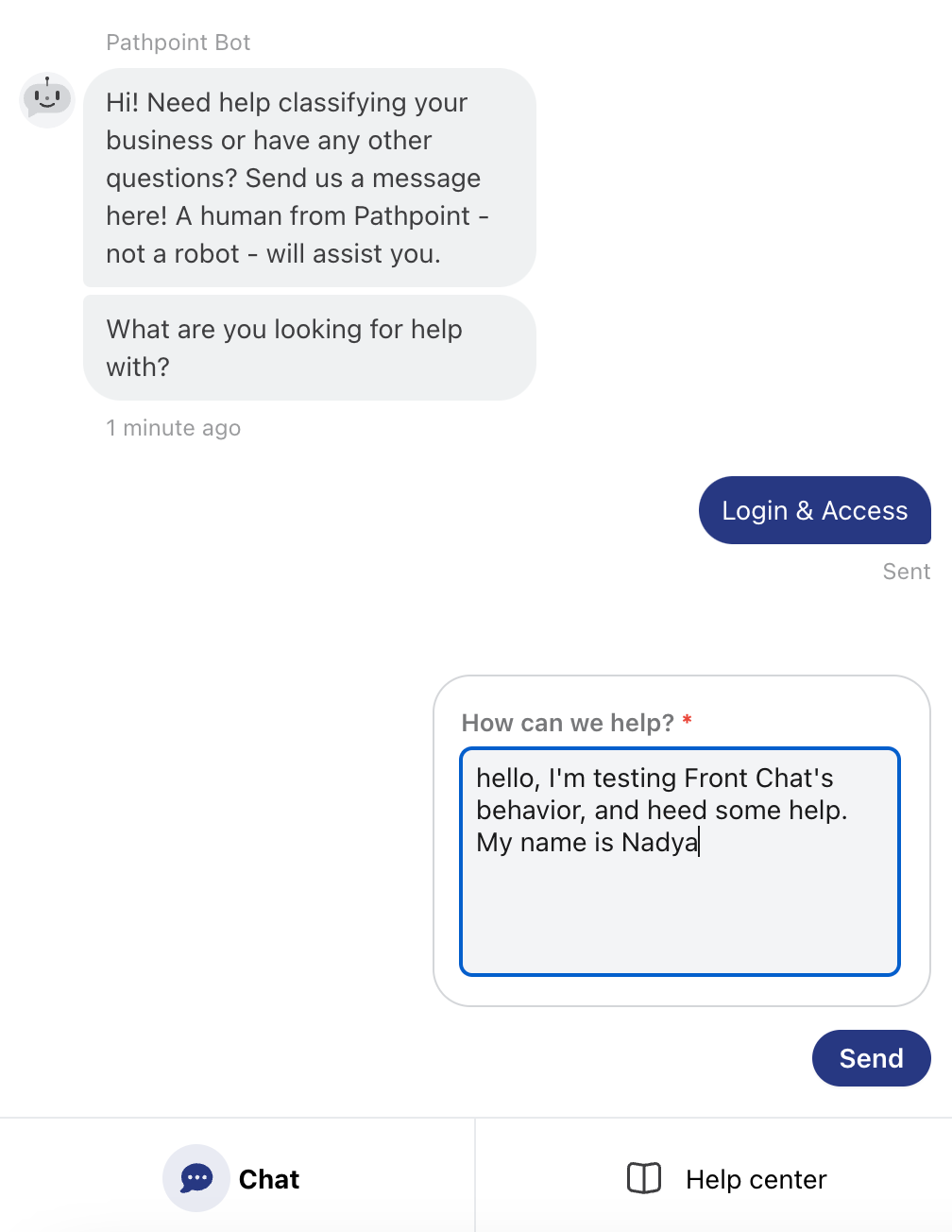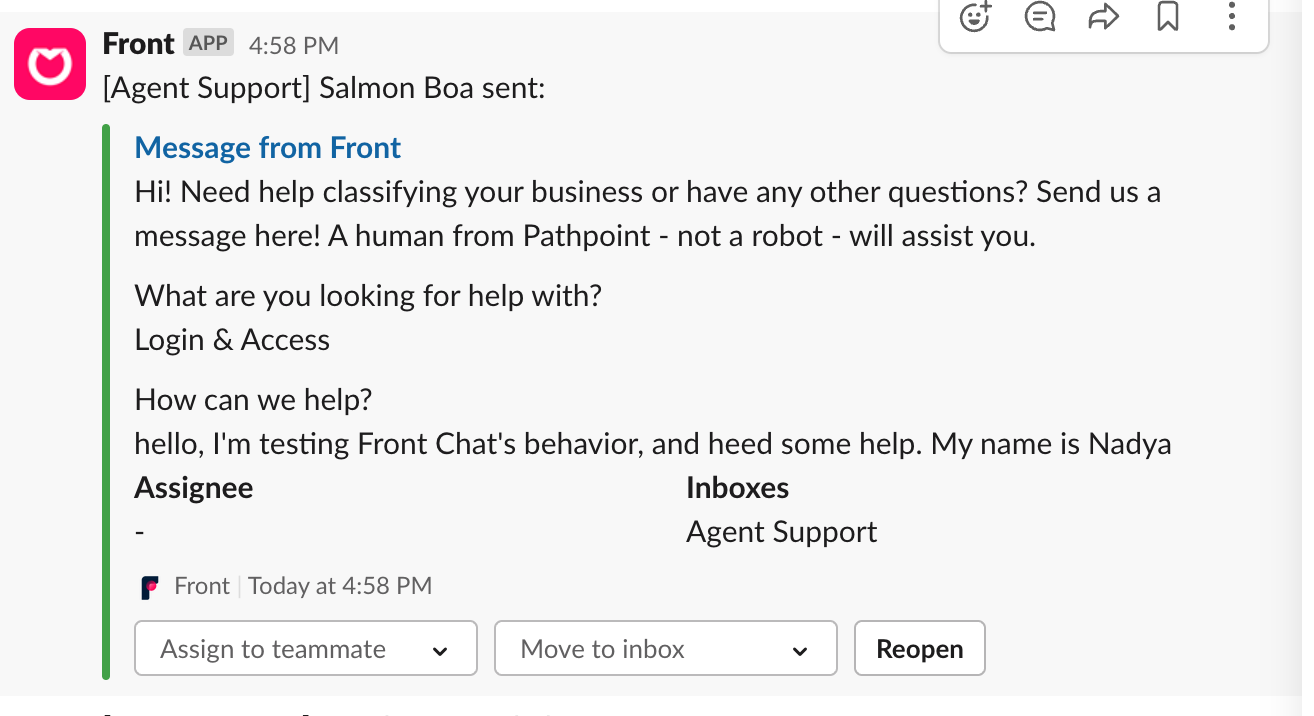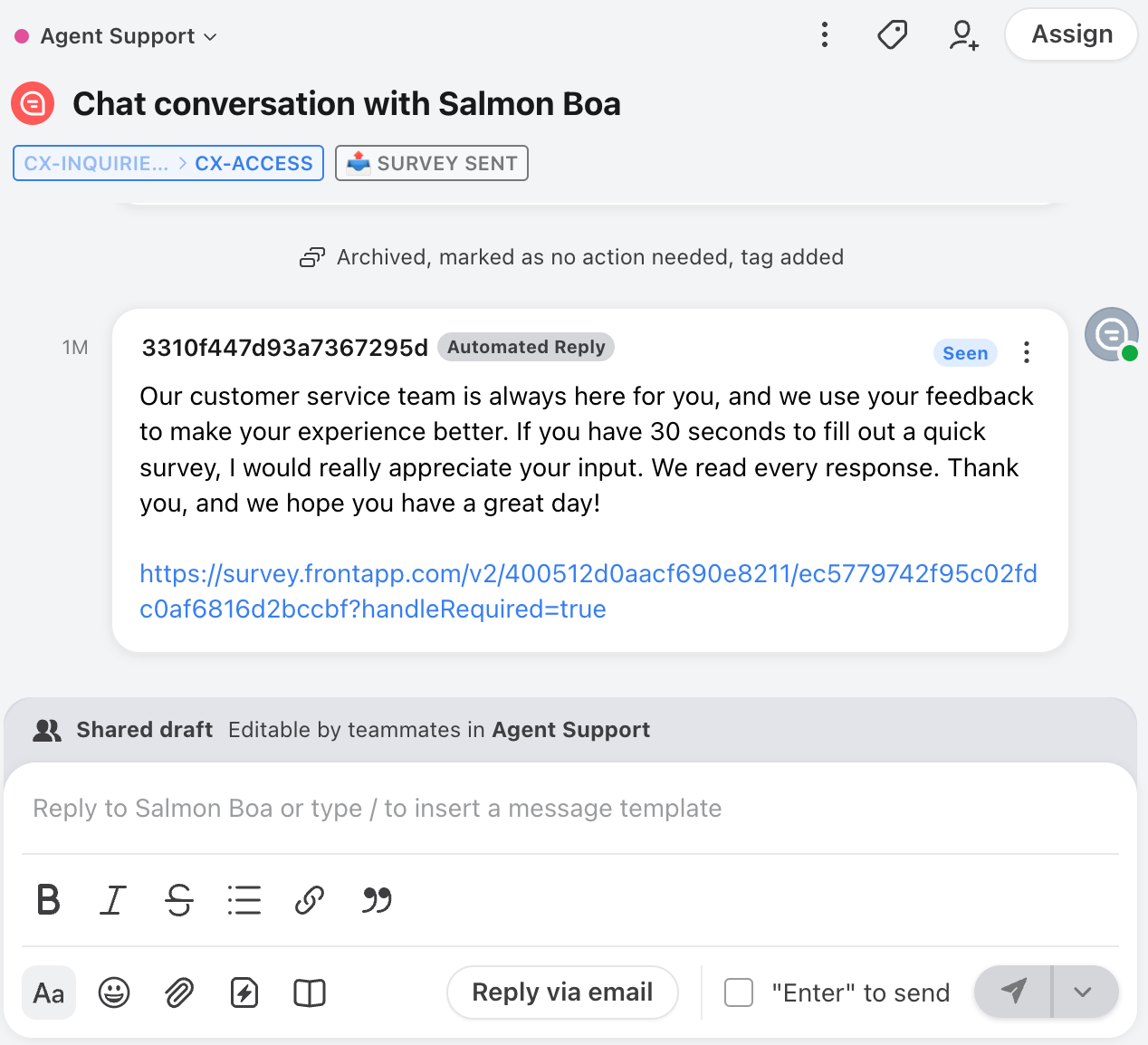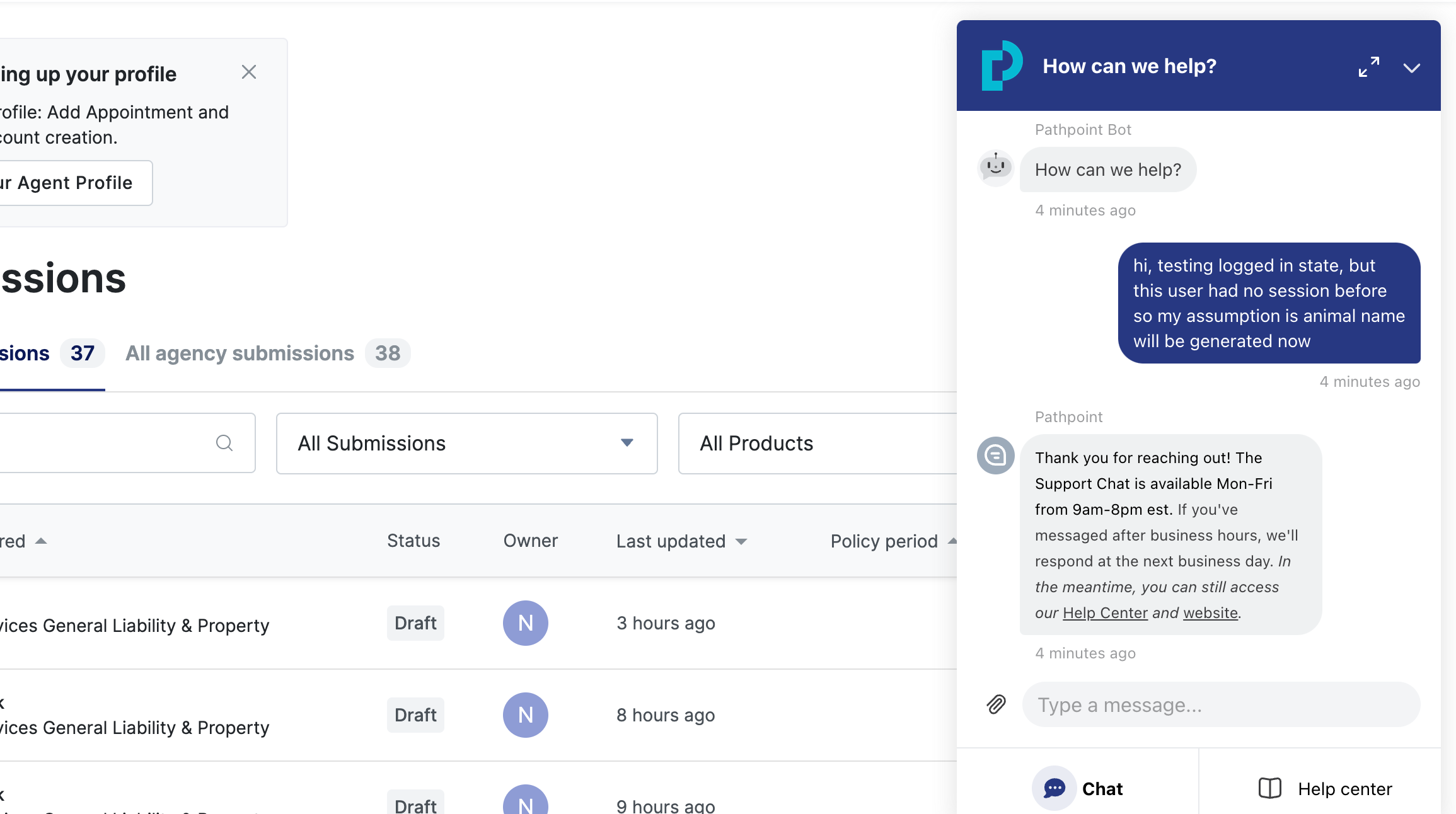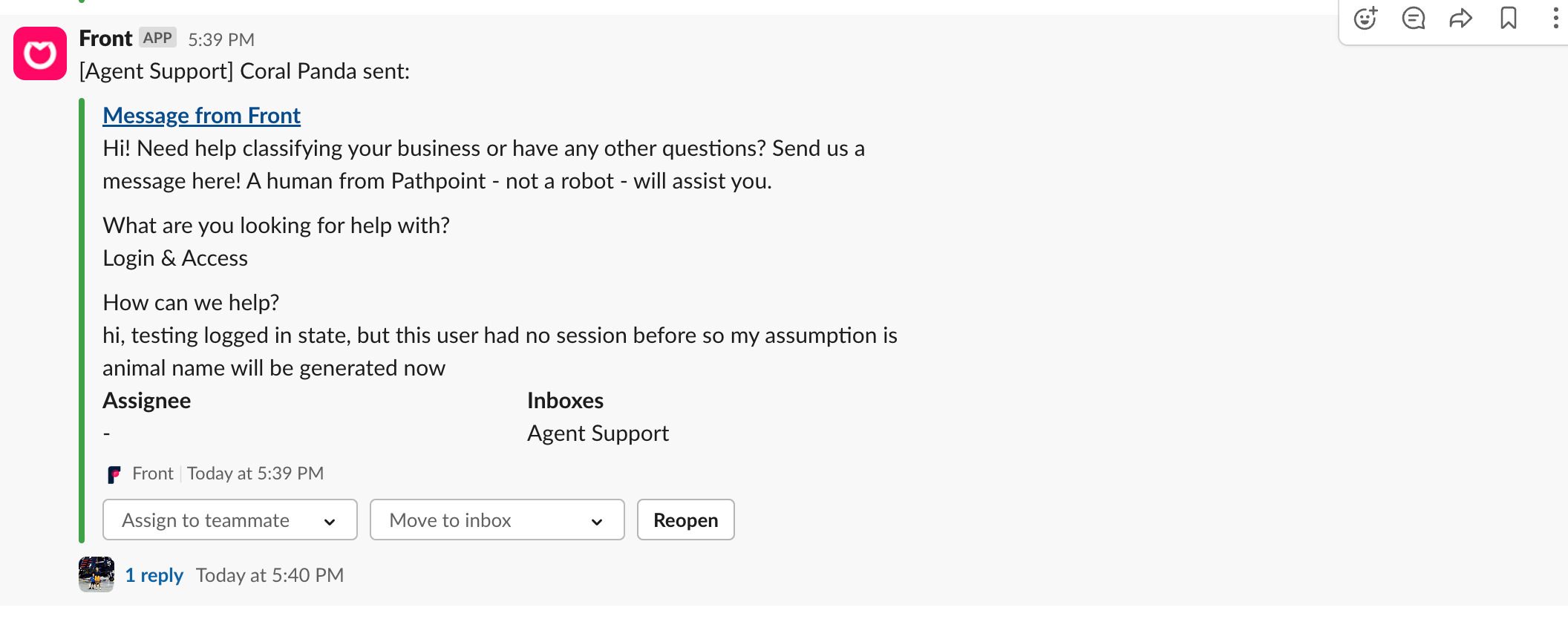I have a question regarding how the frontChatChannel cookie is associated with previous session. Let me describe the weird behavior of Front’s chat bot on our website. See the steps described below.
- I navigate our webapp’s /login url as a logged out user, then locate frontChatChannel cookie and remove it for the domain.
- I assume since there’s now no cookie/token, there’s also no association with prior user session, so the Front chat bot won’t recognize my user’s identity.
- Now, I click the chat’s icon, and observe that there are some options to pick from before getting to the text input.
- I clicked “Login & Access” option, and saw “How can we help” question with a text area. Observe that no email is being asked.
- My message was received via Slack notification and Frontapp as well, and I’ve got this auto-generated name: Salmon Boa
- Can we change this anywhere so the generated names for anonymous users aren’t such as Salmon Boa, Navy Antelope, Coral Alligator, etc? We see these a lot and it’s always an animal theme. Note that sometimes these fake names are generated for users who navigated pages that are seen for logged in users only, so I wonder why the fake names would be generated for them.
- Could you explain to me how frontChatChannel and user sessions work? I didn’t see in our code that we clear Frontchat’s session anywhere as follows: FrontChat('shutdown', {clearSession: true});
See screenshots attached
